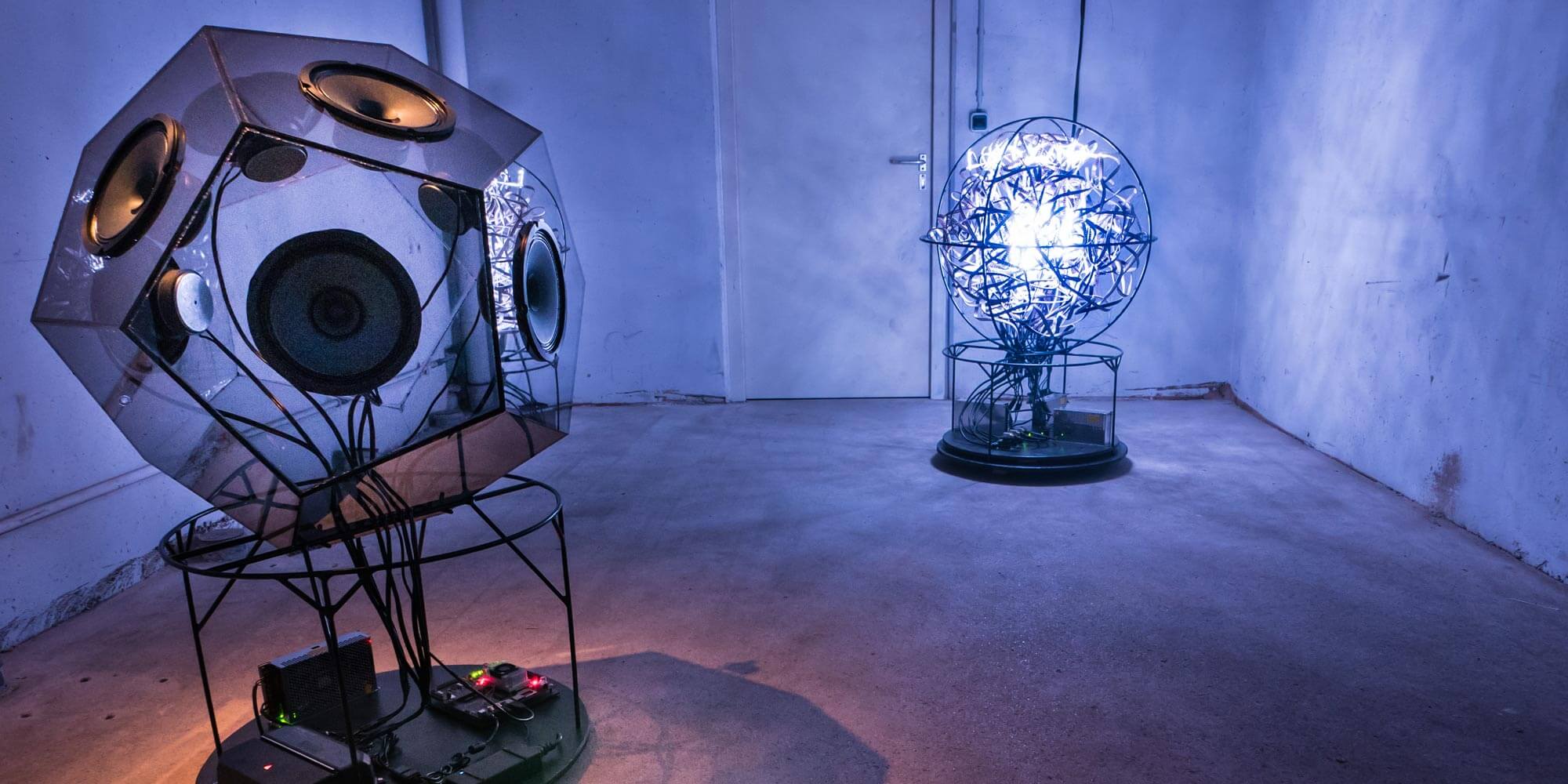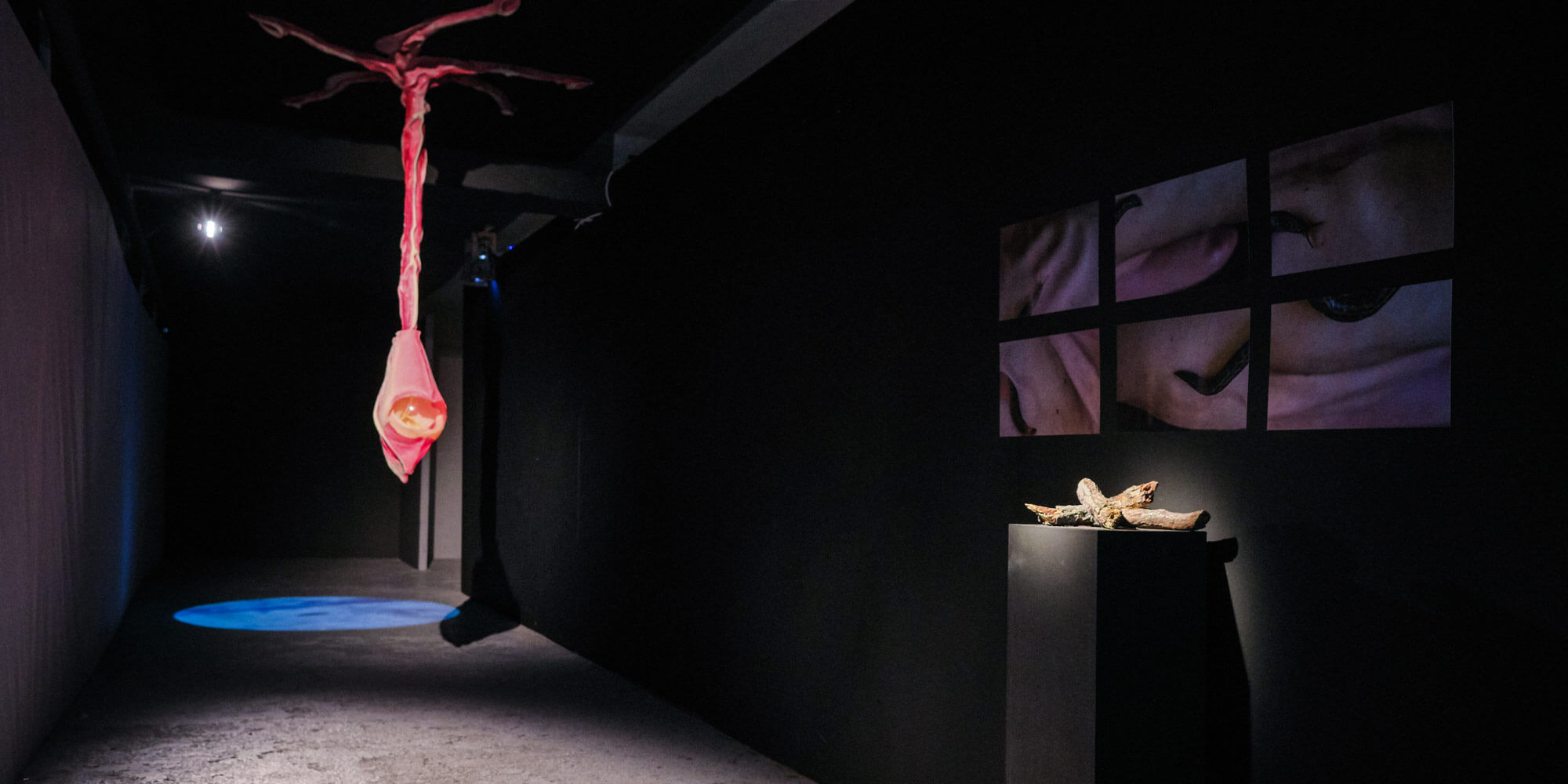Our bodies are being measured and analyzed, dissected and optimized. What are the limits of our self-knowledge? What is the actual essence of human life or where is it to be found? Must we or do we want to transcend the familiar limits of our bodies and enter into a post or transhuman age in order to have any future at all? The bodydatasphere reveals the data and secretions of our bodies: in the recording and visualization of our brain waves when we kiss (Kissing Data Symphony by Karen Lancel and Hermen Maat) or while listening to music together with plants (Beyond Human Perception by uh513), the algorithmic analysis of voices and instruments (Amotion by Silvia Rosani); in visualizations of galvanic skin reactions (Pervasive Eyes by FLOW Architecture), the stigmatization of mental deviations (Chronica by Sophie Hoyle); or automated deception recognition systems and their use in border surveillance (The Irresistible Powers of Silent Talking by Andrius Arutiunian). Some projects will use virtual reality to attempt to enter into the life of other persons by means of 360-degree daily recordings (Seeing-I: The Protagonists by Mark Farid) or to imitate weightlessness (Weightless by Andrej Boleslavský). Others utilize machine learning to explore the swarm behavior of robots (Empathy Swarm by Adam Donovan and Katrin Hochschuh), to put on a robot concert (VIBRATIONS by Moritz Simon Geist), or to initiate a conversation based on light and sound signals between two artificial intelligence dodecahedrons (Speculative Artificial Intelligence Exp.2 by Birk Schmithüsen). Another AI will cause us to shed tears and awaken new life from them (How to Make an Ocean by Kasia Molga). We will also go to extremes, for example, when the biological limits of our bodies are questioned by Quimera Rosa, which inject themselves with chlorophyll to conjure up a human-plant mutation (Trans:Plant), or when the cell cultures of humans and snails interact in a hybrid ecosystem in order to rethink the discourse of sexuality and contraception (Wombs by Margherita Pevere).
Please visit https://emare.eu/ to learn more about the artists behind EMAP






